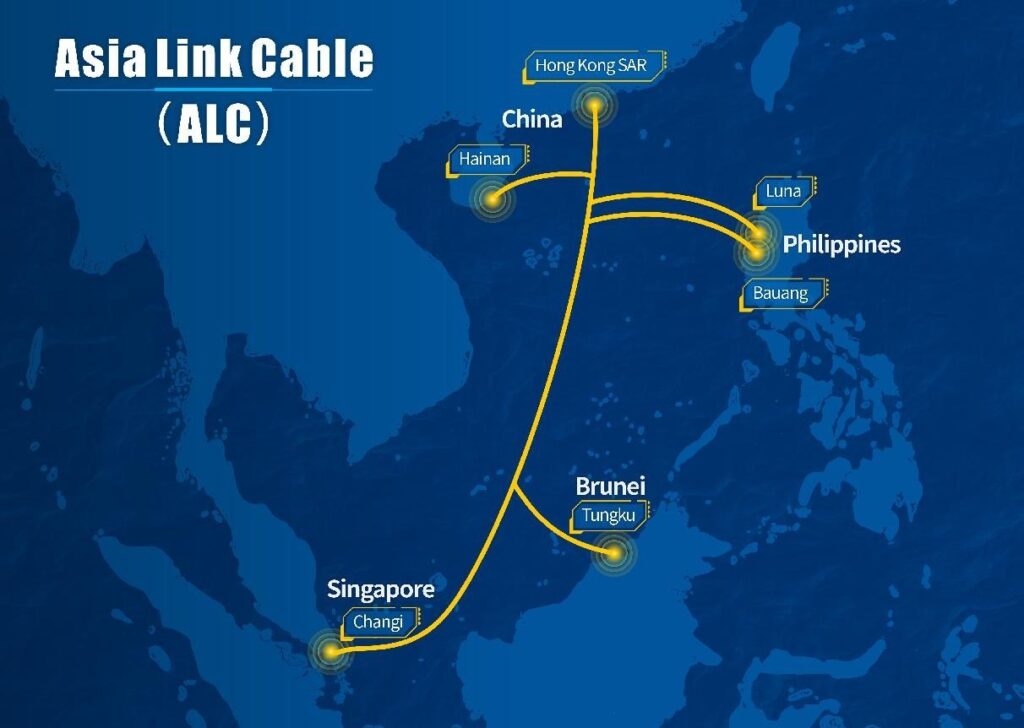The project, led by China Telecom and Singtel, will add 18 TBps of regional capacity
A group of Communication Service Providers (CSPs) servicing the Asia Pacific region announced Tuesday a shared investment of $300 million to develop a 6,000 kilometer (km) submarine cable system in Southeast Asia they’re calling the Asia Link Cable (ALC). The group includes China Telecom, Globe Telecom, DITO, Singtel and UNN. Once completed, the ALC will be able to transmit up to 18 terabits per second (TBps) over eight fiber pairs.
The ALC’s trunk will connect Hong Kong and Singapore, with connecting branches into the Philippines, Brunei and Hainan, China. HMN has been named the system supplier; it anticipates completing construction of the ALC by the third calendar quarter of 2025.

“ALC is seen to provide additional hyper-capacity within Asia and boost resiliency for international traffic. It will have a minimum eight fiber pairs in the system, with 18 Tbps/Fiber Pair minimum trunk design capacity, adding more capacity and diversity to existing networks in the region,” said the group.
The group’s co-chairs, China Telecom’s Chang Weiguo and Singtel’s Alan Tan noted that the ALC’s planning and design started more than two years ago, at the onset of the COVID-19 pandemic. Its development has happened with no face-to-face meetings, they said.
“Despite the challenges presented by safe management restrictions, we managed to come up with a system that will help meet the evolving needs of consumers and enterprises and boost local economies today and in the near future,” said Singtel’s Tan.
The ALC adopts an open cable system architecture, enabling stakeholders to select and maintain separate line terminal equipment to suit specific customer requirements, the consortium noted. It’s intended for further expansion with an eye towards future growth.
To explain why the ALC is so important to the regional economy, Singtel pointed to the 2021 e-Conomy Southeast Asia (SEA) Report, produced by Google, Teasek and Bain. The report forecasts Southeast Asia’s digital economy to expand to US$363 billion by 2025. The region’s digital economy is expected to grow 20% year over year in 2022, according to the report. That growth has been accelerated by the pandemic, said Bill Chang, Singtel’s CEO, Group Enterprise and Regional Data Center Business.
“Consumers and businesses are increasingly relying on services and solutions that require higher-bandwidth and lower-latency connectivity for their work, studies or entertainment,” said Chang.
There’s a more fundamental reason for laying subsea cable, said Singtel. “With no viable alternatives at this time, almost 100% of all international data traffic that companies consume is transported and routed daily via such undersea cables laid on the ocean floor,” it noted.
As regional CSPs build out critical digital infrastructure, so also do hyperscalers. Google is working on Topaz, for example. Topaz is a subsea cable currently under construction which will be the first to link Canada with Asia. Google expects to complete sometime in 2023. The cable will house 16 fiber pairs for a total capacity of 240 Tbps. Topaz is only one of 20 subsea projects Google has announced, including the Equiano cable recently deployed in Togo and the 10 terabit per second Faster Cable System, which links the West Coast of the U.S. with Japan and came online in 2016.

